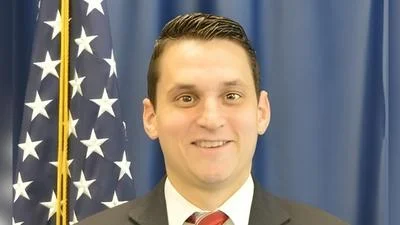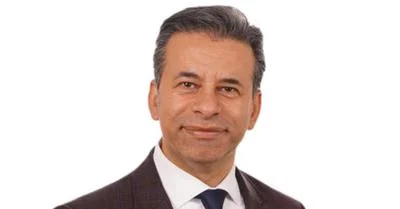The Congressional Record is a unique source of public documentation. It started in 1873, documenting nearly all the major and minor policies being discussed and debated.
“STATEMENTS ON INTRODUCED BILLS AND JOINT RESOLUTIONS” mentioning the U.S. Dept. of Energy was published in the Senate section on pages S3062-S3063 on May 22, 2019.
The Department oversees energy policies and is involved in how the US handles nuclear programs. Downsizing the Federal Government, a project aimed at lowering taxes and boosting federal efficiency, said the Department's misguided energy regulations have caused large losses to consumers for decades.
The publication is reproduced in full below:
STATEMENTS ON INTRODUCED BILLS AND JOINT RESOLUTIONS
By Mr. KAINE (for himself and Mr. Jones):
S. 1599. A bill to amend the Internal Revenue Code of 1986 to create a refundable tax credit for foster families, and for other purposes; to the Committee on Finance.
Mr. KAINE. Mr. President, today I am introducing the Foster Care Tax Credit Act, with my colleague Senator Jones. Enacting this bill would go a long way towards helping families with the expenses that come with taking in and providing homes for foster children.
Currently, foster families are only eligible for the Child Tax Credit if the same child lives with them for at least six months. Many foster families take in children for shorter periods, and sometimes take in multiple different children throughout the year. Even if these placements add up to more than six months, these families are potentially not eligible for the tax credit. Further, state funding for foster care families often fails to cover the cost of meeting the child's basic needs.
The Foster Care Tax Credit Act would create a new refundable tax credit targeted at these families that take in foster children but are not eligible for the Child Tax Credit. The tax credit would help ease the financial strain that many of these families face. Further, the bill instructs the Secretary of Health and Human Services and Secretary of the Treasury to conduct outreach to state and tribal agencies to better educate foster families about provisions of the tax code that may benefit them.
I hope my colleagues will support this bill to provide assistance to families who have chosen to offer a loving home for children who need it most.
______
By Mr. WYDEN (for himself, Mr. Risch, Mr. King, Mr. Crapo, Mr.
Merkley, and Ms. Collins):
S. 1614. A bill to amend the Clean Air Act to modify the definition of ``renewable biomass'' under the renewable fuel program; to the Committee on Environment and Public Works.
Mr. WYDEN. Mr. President, Oregonians have a strong interest in using biomass as a source of renewable fuels. This desire, coupled with how well we grow biomass in Oregon, creates the opportunity to use carefully selected wood waste as a source for cleaner transportation fuel. If we do it right, this effort will lead to healthier forests, more carbon sequestration, cleaner transportation fuels as compared to traditional gasolines, and protected old growth forests.
Current law excludes the use of federal biomass in the making of renewable fuels as defined by the Renewable Fuel Standard (RFS). The bill being introduced today eliminates that exclusion.
In addition to being an energy matter, this is an important forest management issue. Over many decades there has been an unnatural buildup of woody material on the forest floor. It becomes fuel for catastrophic wildfires. For months, each summer, Oregonians in every corner of the state, from Astoria to Adel and from Medford to Madras, suffer from smokey skies, hazardous air quality, and the almost constant threat that a wildfire may burn down their homes. In the eastern portion of the state, invasive species like juniper trees pose challenges, on both private and public lands--lowering water tables, posing fire risks, and encroaching on sage grouse habitat. It is time we stopped putting our heads in the sand, hoping the environmental ship will right itself.
Instead, this excess woody biomass should be contributing to U.S. energy independence by being converted to transportation or electricity fuels. This bill makes that economically feasible. It would make it more cost efficient for private landowners to remove low-value brush, like juniper. The bill also helps pay for programs to reduce dead and dying trees that fuel catastrophic wildfires and helps thin out unhealthy second-growth forests. The bill ensures that all residuals from the milling process and certain biomass from national forests and BLM forests qualify for the RFS standards.
Importantly, under this new definition biomass materials harvested from federal lands must be done so in accordance with all federal laws, regulations, and land-use plans and designations. In addition, the bill pays specific attention to biomass removal from insect and disease ridden forests and wildfire prone areas. And, to ensure environmental problems are being solved, not created, the bill restricts the types of biomass materials that can be harvested from federal lands so that old growth trees and stands will continue to be protected.
At the end of the day, the small diameter trees, the limbs, the debris, even sawdust at the mill presents real opportunities to generate green energy, generate green jobs, lower wildfire risks in rural areas across the country, and better position the United States to meet the RFS.
There is a lot of bipartisan support for the biomass definition in this bill. It balances sound energy policy with sound environmental policy.
I want to thank my colleagues Senators Risch, King, Crapo, and Merkley for joining me on this important bill.
______
By Ms. COLLINS (for herself, Mr. Heinrich, Ms. Smith, Mr.
Gardner, Mr. Coons, Ms. McSally, and Mr. King):
S. 1602. A bill to amend the United States Energy Storage Competitiveness Act of 2007 to establish a research, development, and demonstration program for grid-scale energy storage systems, and for other purposes; to the Committee on Energy and Natural Resources.
Ms. COLLINS. Mr. President, I rise today to introduce the Better Energy Storage Technology Act. I am pleased to be partnering with Senator Heinrich on this initiative. I would also like to thank Senator Gardner, Senator Smith, Senator Coons, Senator McSally, and Senator King who have joined us as original cosponsors of the BEST Act.
Our bipartisan bill supports narrowly tailored energy storage research to develop the next generation of technologies at the Department of Energy. Advancing next generation energy storage technology will allow us to integrate more renewables into the power grid, such as wind energy or solar energy which, in turn, will help to reduce emissions and slow climate change.
Energy storage systems provide a wide range of benefits. First, these technologies increase the reliability and the resilience of the electric grid by limiting potential disruptions. Energy storage helps us to better manage supply and demand on the grid and allows for the expanded use of renewable energy. The reliability of our grid and grid-
scale storage systems go hand-in-hand.
Second, this type of technology can decrease energy costs, a goal that we all share. In Maine, the price of electricity rises steeply during the coldest days of the year. For example, in late 2017 and early 2018, very cold temperatures in New England led to higher energy costs--more than a billion dollars in the wholesale energy market--in just 15 days.
The next generation of energy storage technologies could help to transform our grid, meaning that we would no longer need to generate more expensive power to meet demands during the hottest and coldest days of the year. Instead, we could use more affordable energy sources that have been stored for later use.
Third, energy storage systems can allow for more intermittent renewable sources, such as wind and solar power, to be placed on the grid and used precisely when they are needed. The Aqua Ventus, a floating, deepwater offshore wind project being developed by the University of Maine and a consortium of groups, could benefit from energy storage innovation. Off the coast of Maine, there are very strong and consistent winds where offshore wind turbines can produce electricity almost 50 percent of the time. This next generation storage technology will ensure that we can use this wind power closer to 100 percent of the time by storing electricity to use when the wind isn't blowing.
One of the biggest hurdles to commercializing energy storage is cost. To overcome this obstacle, our bill specifically directs the Department of Energy to work to decrease the cost of this exciting technology. This is similar to the Department's SunShot initiative that decreased the price of solar power by approximately 75 percent in less than a decade.
Furthermore, energy storage systems are technology neutral. This bill will foster innovation and enhance deployment of these innovative technologies without picking winners or losers.
Specifically, our bill would do the following: It would focus energy storage research on highly flexible, longer duration, and seasonal storage systems. It would support five energy storage demonstration projects. The bill would create a strategic plan and allow the Department of Energy to develop cost targets. It would coordinate research and support the coordination of research. Finally, the bill would authorize $60 million annually for each of the next 5 years.
I am pleased to report that our bipartisan bill has earned very broad support, including the endorsements of the Bipartisan Policy Center, Citizens for Responsible Energy Solutions, ClearPath, Edison Electric Institute, Energy Storage Association, the Information Technology and Innovation Foundation, the National Audubon Society, the Natural Resources Council of Maine, the National Hydropower Association, Solar Energy Industries Association, the Union of Concerned Scientists, and the U.S. Chamber of Commerce.
Frankly, it has been a long time since I have seen a bill be able to attract that much support from groups that have different ideological goals, and I am very proud that we were able to line up the support of all of those groups.
The BEST Act will help advance energy storage technologies to improve the efficiency of our Nation's electrical grid while helping to promote the wider use of clean, renewable energy. The goals of this bill are those which I would hope every Member of this body could embrace. I urge my colleagues to support this legislation.
Thank you, Mr. President.
____________________








